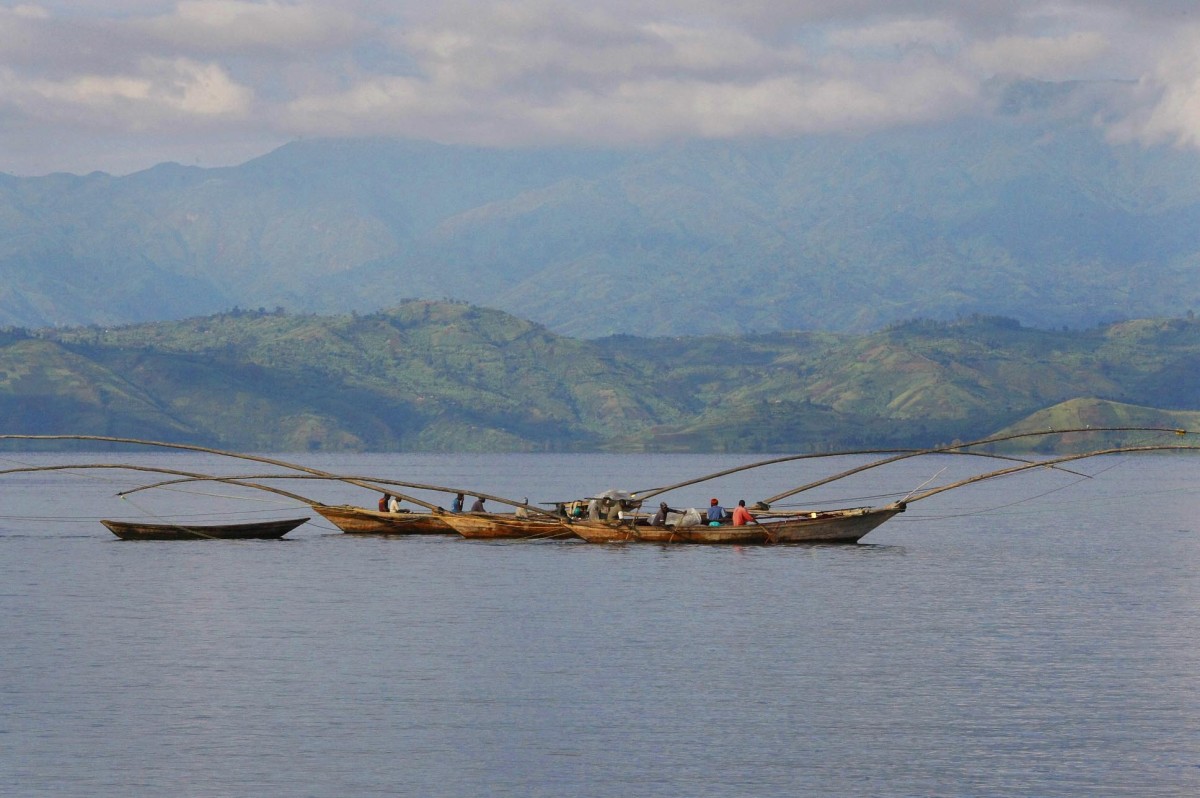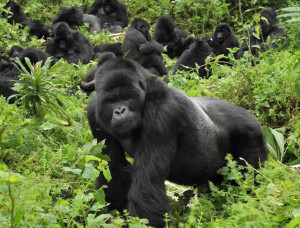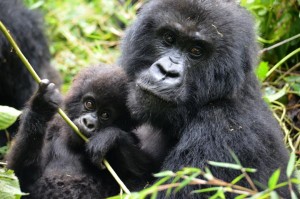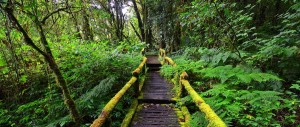Rwanda’s western side is bounded by Lake Kivu, one of a string of huge freshwater lakes which lie along Africa’s Great Rift Valley. Dominating the border between Rwanda and the DRC (Democratic Republic of Congo); Lake Kivu is Rwanda’s largest lake, and the sixth largest lake in Africa.
The Volcanoes National Park (Parc des Volcans) was made famous by Dian Fossey’s work, and the film Gorillas in the Mist. Along with an array of other endangered species, more than half of the world’s last mountain gorillas live here. At present, it’s probably the best place in Africa to see them.
The real joy of this area is driving between the towns, and it’s a lovely option for a slower route between Nyungwe Forest National Park and Volcanoes National Park. The road gently curves back and forth as it weaves through hills and mountains beside the lake from Gisenyi all the way to Cyangugu, with Kibuye almost at its centre point. Every corner produces another gorgeous view. Eucalyptus trees line the road, while every inch of the hills seems to be terraced with bananas.
Gisenyi (Rubavu)
Gisenyi (also referred to by its new name Rubavu) is a large town spread over several hills on the northern edge of Lake Kivu. Once a colonial beach resort, Gisenyi’s waterfront is lined with fading old mansions, some decent hotels including some of international standard, and trendy bars on the lakeshore, ideal for a sundowner cocktail. Nearby Rubona is also home to some pretty lakeside hotels.
What to do in Gisenyi (Rubavu)
There is a pleasant public beach on Gisenyi’s lakeshore but it can get quite busy, particularly at weekends. Some hotels have private beaches and water sport options.
Driving north from Gisenyi (Rubavu), the Imbabazi Orphanage founded by American Rosamund Halsey Carr, is a beautiful memorial to a remarkable lady. On returning to Rwanda after the genocide at the age of 82, she transformed her ransacked house into an orphanage for survivors and over 400 orphans have since called this place home. Sitting among colourful gardens, the house looks like an English country cottage, complete with an aging Labrador. Imbabazi is planning to develop a cultural centre in Carr’s memory and runs a variety of projects for local people, continuing to support its former orphans. Your driver/guide will need to contact the orphanage beforehand should you like to visit.
Kibuye (Karongi)
About 100km south of Gisenyi, Kibuye (also known by its new name Karongi) is probably the prettiest of Lake Kivu’s towns. It’s a verdant, tropical spot surrounded by hills covered in eucalyptus and pine. If you’re visiting in August, you may catch thousands of yellow-billed kites here flying over Lake Kivu on their annual migration. Most of Kibuye’s hotels are in beautiful locations overlooking the lake and facing the sunset.
What to do in Kibuye (Karongi)
From Kibuye (Karongi) you can take boat trips on Lake Kivu to nearby islands: Napoleon Island with its colony of fruit bats and Amahoro Island (aptly known as “One bar island” because all it has on it is one bar). It’s also possible to visit Kibuye’s genocide memorial church, with brightly coloured stained-glass windows, in a quiet location on a hill above Lake Kivu. Despite a tragic history, it’s a place for peaceful contemplation.
Cyangugu (Rusizi)
At the southern end of Lake Kivu, Cyangugu (pronounced ‘Shangugu’ – its new name of Rusizi is easier to pronounce!) is an old border town whose fading façades tell of its past as a vital trading gateway. It makes for a convenient base if you want to combine a stay on Lake Kivu with Nyungwe Forest National Park, which is only 45 minutes away, although there are limited hotel options.




